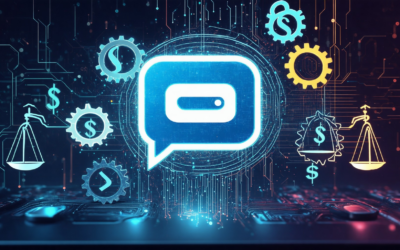Cultural diversity experiences are integral to shaping our understanding of the world, influencing everything from daily interactions to global policies. These experiences encompass a wide range of human traditions, beliefs, and customs, offering unique perspectives on life. By exploring cultural diversity experiences, we gain insights into how different societies adapt to their environments, celebrate their heritage, and navigate challenges. From multiculturalism activities to cross-cultural encounters, this exploration reveals the rich tapestry of human existence, providing valuable lessons for fostering inclusivity and mutual respect. Whether through cultural awareness events or diversity training exercises, understanding these experiences helps us build bridges between communities and create a more harmonious world.

Diverse Cultural Experience
A diverse cultural experience refers to the appreciation and recognition of the various cultural backgrounds, traditions, beliefs, and perspectives that make up a society. It involves understanding that individuals come from different ethnic, racial, religious, linguistic, and social backgrounds, and that these differences contribute to the richness and complexity of human life.
Key Aspects of a Diverse Cultural Experience:
- Multiculturalism : Recognizing and celebrating the coexistence of multiple cultures within a single society. This includes acknowledging the unique contributions of different groups, such as their customs, languages, and traditions.
- Cultural Awareness : Developing an understanding of others’ cultural contexts, including their history, values, and practices. This helps foster empathy and respect among individuals from diverse backgrounds.
- Inclusivity and Representation : Ensuring that all voices and perspectives are heard and valued, particularly those that have been marginalized or underrepresented in mainstream narratives.
- Globalization and Cross-Cultural Communication : Understanding how cultural exchange influences societies and individuals, as well as the challenges and opportunities it presents.
Examples of Diverse Cultural Experiences:
- Festivals and Celebrations : Events like Diwali, Mardi Gras, and Carnival showcase the vibrant cultural tapestry of different communities.
- Cuisine : Food is a powerful expression of cultural identity. Dishes like curry, sushi, and tacos reflect the culinary diversity of global cultures.
- Language and Art : The use of languages like Mandarin, Spanish, and Arabic, along with artistic expressions such as Bollywood movies and traditional African drumming, highlight cultural diversity.
Importance of Embracing Diversity:
- Personal Growth : Engaging with diverse cultures broadens perspectives and fosters creativity.
- Societal Progress : A culturally diverse society is more innovative and resilient, as it draws from a wider pool of ideas and solutions.
By embracing and celebrating cultural diversity, we create a more inclusive and harmonious world where everyone feels valued and respected.
Cultural Diversity and Examples
Cultural diversity refers to the existence and recognition of multiple distinct cultural groups within a society or organization. It encompasses differences in race, ethnicity, gender, sexuality, language, religion, and other social identities. Cultural diversity is celebrated because it enriches our lives, fosters innovation, and creates more inclusive environments.
Key Aspects of Cultural Diversity
- Race and Ethnicity: Recognizing and respecting differences in racial and ethnic backgrounds, such as African American, Hispanic/Latino, Asian, and White populations.
- Gender and Sexuality: Acknowledging and valuing the diverse gender identities and sexual orientations within society.
- Language and Religion: Supporting multilingual and multicultural practices, as well as respecting various religious beliefs and practices.
- Economic Status and Education: Addressing disparities in economic status and ensuring access to quality education for all cultural groups.
Examples of Cultural Diversity in Action
- Workplace Diversity Programs: Many companies implement diversity initiatives to create inclusive workplaces, such as Google’s “Diversity & Inclusion” team.
- Educational Institutions: Schools and universities often promote diversity through inclusive curricula and extracurricular activities, such as cultural fairs and debate clubs.
- Technology Industry: Tech companies like Microsoft and IBM invest in diversity-focused hiring practices and leadership development programs.
- Globalization Efforts: Organizations like the United Nations promote cultural diversity through global initiatives aimed at reducing cultural barriers and fostering understanding.
The Importance of Cultural Diversity
- Economic Growth: Diverse workforces drive innovation and creativity, leading to better problem-solving abilities and increased productivity.
- Social Cohesion: Cultural diversity helps build stronger communities by promoting mutual respect and understanding among different groups.
- Global Competitiveness: Companies that embrace diversity are better prepared to compete in international markets due to their ability to cater to diverse customer bases.
Challenges and Solutions
- Cultural Insensitivity: Addressing biases and stereotypes requires ongoing education and awareness campaigns.
- Bridging Gaps: Creating opportunities for dialogue and collaboration between different cultural groups can help reduce misunderstandings and conflicts.
- Policy Implementation: Governments and organizations can support diversity initiatives through legislation and funding programs.

In What Ways Do You Experience Cultural Diversity?
- Cultural diversity manifests in various aspects of daily life, including workplaces, schools, neighborhoods, and online communities.
- In the workplace, it can take shape through a multilingual team, flexible policies that accommodate different customs, and cross-cultural training programs.
- In educational settings, it appears when students from diverse backgrounds collaborate on projects, leading to innovative solutions and mutual understanding.
- In local communities, it is evident during festivals that celebrate different cultural heritages, bringing people together to share traditions and foods.
- Online platforms showcase cultural diversity through global connections, shared traditions, and virtual collaborations that transcend geographical boundaries.
- Traveling and interacting with locals in different regions provides firsthand exposure to unique customs, languages, and lifestyles.
Why Does Cultural Diversity Matter?
- Cultural diversity enriches our lives by exposing us to new perspectives, ideas, and ways of thinking.
- It prepares individuals and societies to thrive in a globalized world by fostering adaptability and open-mindedness.
- It promotes social harmony by encouraging empathy and respect among different groups, reducing misunderstandings and conflicts.
- Cultural diversity preserves and celebrates the uniqueness of human experiences, ensuring that diverse voices are heard and valued.
The experiences of cultural diversity are vast and multifaceted, shaping how we interact, learn, and grow in an increasingly interconnected world. By embracing and understanding cultural differences, we unlock opportunities for personal growth and collective progress.

Examples of Cross-Cultural Experiences
Cross-cultural experiences encompass a wide range of activities and interactions that allow individuals to understand and appreciate diverse cultures. Here are some examples:
- Cultural Festivals: Events like Holi in India, Carnival in Brazil, and Oktoberfest in Germany bring together people from different backgrounds to celebrate traditions, music, and food.
- Culinary Exchanges: Sharing dishes like sushi in Japan, curry in Thailand, and paella in Spain fosters mutual understanding and appreciation among different cultures.
- Art and Music Collaboration: Projects like the Sydney Opera House blend modern architecture with Indigenous Australian themes, showcasing cross-cultural collaboration in art and design.
- Spiritual Gatherings: The Kumbha Mela festival in India attracts millions worldwide, offering a chance to experience spiritual practices and cultural performances from various traditions.
- Historical Trade Routes: The Silk Road facilitated the exchange of goods, ideas, and cultures between East and West, leaving lasting impacts on civilizations along the route.
- Modern Technology Integration: Virtual reality platforms allow users to virtually explore landmarks like the Great Wall of China or the Amazon Rainforest, bridging cultural gaps through immersive experiences.
Cultural Diversity in the United States
The United States is a nation of immigrants, characterized by its rich and diverse cultural tapestry. Here are some examples of the cultural diversity:
Ethnic Groups
- African Americans: Known for contributions in music, art, and cuisine like soul food and jazz.
- Hispanic/Latino Americans: Includes a wide range of cultures from Mexico, Cuba, Puerto Rico, and more, contributing dishes like tacos, burritos, and paella.
- Asian Americans: Influential through cuisine like sushi, ramen, and contributions to festivals like Lunar New Year.
- Native Americans: Rich traditions, art, and powwows celebrating indigenous heritage.
- Middle Eastern Americans: Contributions include dishes like falafel and schwarma, along with cultural practices like Eid celebrations.
Contributions to Culture
- Festivals: Celebrations like Mardi Gras, Cinco de Mayo, Fourth of July, and Oktoberfest reflect diverse cultural roots.
- Languages: Over 300 languages are spoken across the country, showcasing linguistic diversity.
- Religion: The U.S. is home to people of various faiths, including Christianity, Islam, Hinduism, Buddhism, and others, leading to vibrant religious festivals and observances.
Cuisine
- Soul Food: A dish rooted in African American tradition, featuring ingredients like okra, collard greens, and fried chicken.
- Tex-Mex: Fusion of Mexican and American flavors, popularized by dishes like chili con carne and queso dip.
- Chinese-American Cuisine: Includes dishes like dim sum, dumplings, and General Tso’s chicken.
- Italian-American Tradition: Contributions include pasta, pizza, and lasagna, reflecting Italian heritage.
Melting Pot
- Cultural Fusion: Dishes like ceviche (Peruvian-Japanese), pho (Vietnamese-French), and pierogies (Polish) highlight cross-cultural influences.
- Regional Specialties: Each state has unique foods and traditions, such as Louisiana’s Creole cuisine blending French, Spanish, African, and Native American elements.
The cultural diversity of the United States is a reflection of its history, immigration, and the ability to blend different traditions into a unique national identity. From food and festivals to language and customs, the U.S. celebrates its rich and varied heritage.
For more insights into cultural exploration, visit Bending Borders .

Cultural Divergence Example
The concept of cultural divergence refers to the separation of distinct groups into different cultural identities due to various social, economic, or historical factors. One prominent example of cultural divergence is:
- The Amish Community : The Amish people of North America exemplify cultural divergence through their maintenance of traditional lifestyles, including distinctive clothing, language, and societal norms. Their commitment to preserving these practices has led to significant differences between Amish communities and broader American culture.
- The Maori Culture in New Zealand : The Maori, indigenous to New Zealand, have maintained their unique traditions, including language, art, and social structures, despite the influence of Western culture. This divergence has contributed to a rich cultural tapestry within the country.
Cultural divergence often arises due to a group’s desire to preserve its identity, leading to unique traditions, social norms, and value systems that distinguish them from surrounding cultures. This phenomenon highlights the complexity of human societies and the resilience of certain traditions in the face of external influences.
Understanding cultural divergence is essential for fostering cross-cultural communication and respect. By recognizing and appreciating the uniqueness of different cultures, we can promote a more inclusive and harmonious global society.




0 Comments